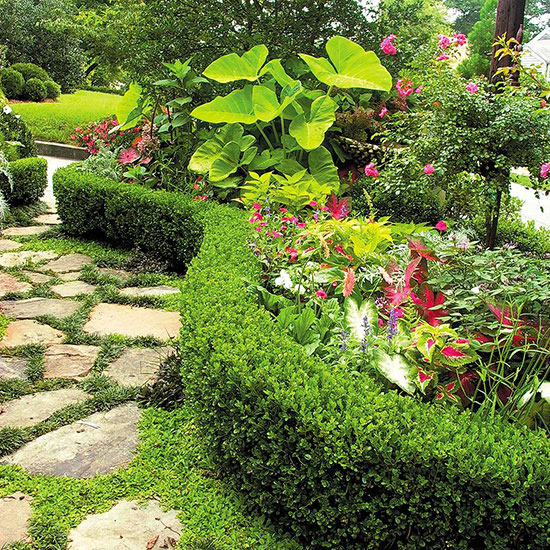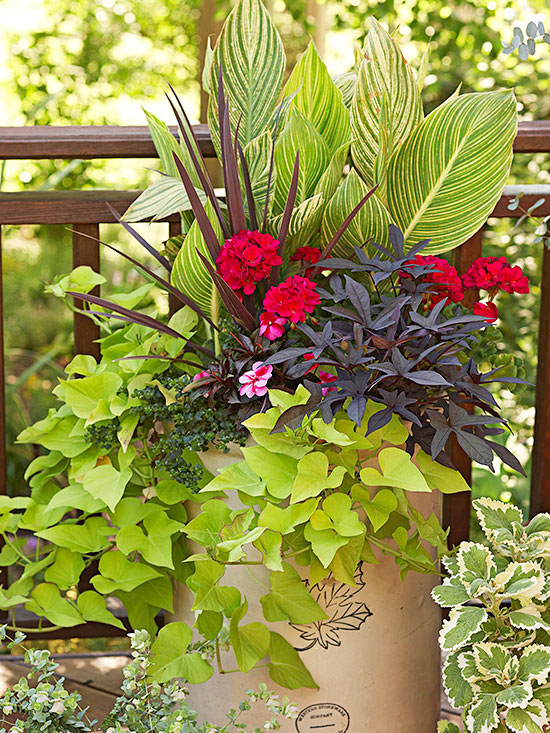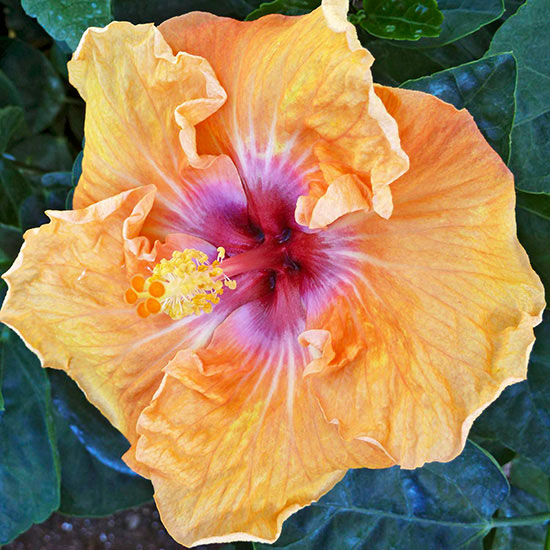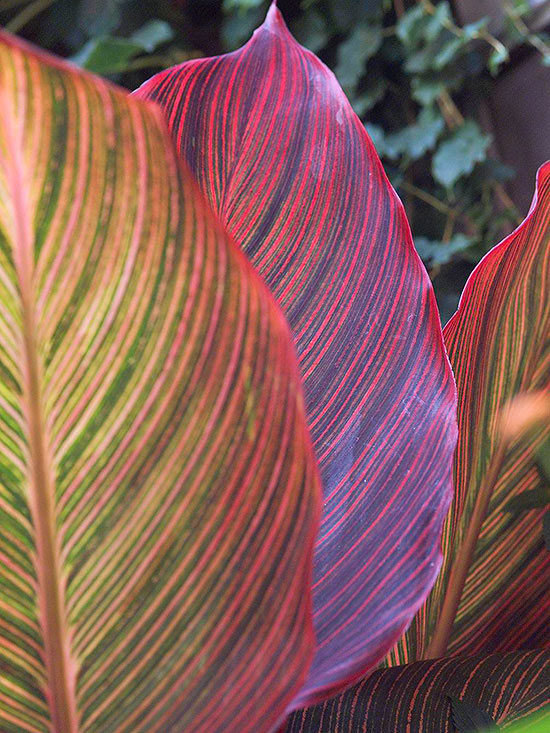






Tropicals are a natural choice for growing in containers. Just give them enough elbowroom to spread their roots. They're hardwired to grow and won't thrive for long in 10- or 12-inch pots. Plants like Cannas will outgrow -- and possibly crack -- even 14-inch pots in a single growing season. Some tropicals achieve significant height during the growing season and will quickly topple pots that are too small.
In the landscape, the easy-growing habits of tropicals make every gardener feel like an expert. These plants tend to produce luxurious growth with remarkable speed, so you can savor the fruits of little labor yet garner sincere compliments from neighbors.
Don't want to wait? You can create an instant tropical paradise by purchasing large plants in 3-gallon pots. Most often, you'll find these larger pot sizes at independently owned garden centers. If you're happy to start with gallon-size pots and watch your tropical garden grow, check out the offerings at discount stores and home centers.

Tropicals need heat to thrive. For the most part, they don't demand heavy-duty coddling to achieve lush growth. They typically leap from the ground when summer heat builds. For most tropical plants, simply providing full sun and ample water yields jungle-size leaves and showstopping flowers.
It's worth digging into the exact fertilizer needs of specific plants to be sure you're delivering the right nutrition. In general, a nitrogen-rich fertilizer or aged compost worked into the soil ensures a steady supply of larger, more numerous leaves. Choose this regimen for plants prized for their glorious foliage, such as Canna or elephant's ear.
A bloom-booster fertilizer encourages abundant blossoms and is a must with flowering tropicals, such as angel's trumpet, Mandevilla, and Chinese hibiscus. Using a liquid fertilizer allows you to control the application frequency. Typically a dose every two weeks is sufficient to fuel a fantastic flower show.
Tropicals respond quickly to temperature, and as night temperatures begin to dial down, growth slows. The first frosty night melts leaves and flowers into watery mush.
At this point, some gardeners dig roots
to overwinter the plant indoors. Others just celebrate the end of another growing season and let the plant die. In warm climates, the end of a tropical plant's life simply signals the end of warm-season color and the beginning of cool-season quick color.
When growing tropicals for a backyard escape, accent the plantings with accessories that infuse the garden with equatorial ambience. A trickling fountain, lit torches, and even pink flamingos fit the mood. Consider trying out some wicker furniture, a hammock swing, or a rattan rug to cultivate a vacation paradise outside your own back door.
See tropical flowers perfect for patios.

Abutilon Pretty bell-shape blooms dangle from stems.
Angel's Trumpet Exotic flowers exude intense fragrance.
Canna Large blossoms boast rich, sizzling hues.
Chinese Hibiscus Striking flowers open in many colors.
Mandevilla Twining vines support large, flared blooms.

Banana Tall, lush leaves may be variegated.
Canna Leaves offer eye-catching variegation.
Cordyline Upright, spiky plants bear strappy leaves.
Elephant's Ear Mammoth leaves provide various color choices.
New Zealand Flax Strong, upright plants feature wide, grasslike leaves in many hues.
Copyright © www.100flowers.win Botanic Garden All Rights Reserved